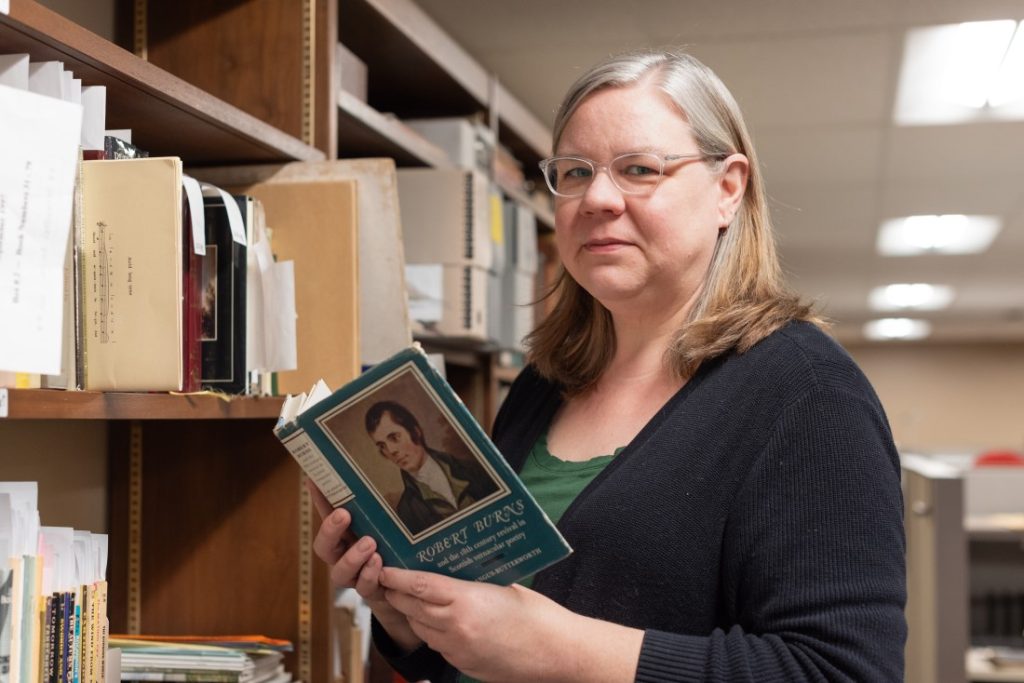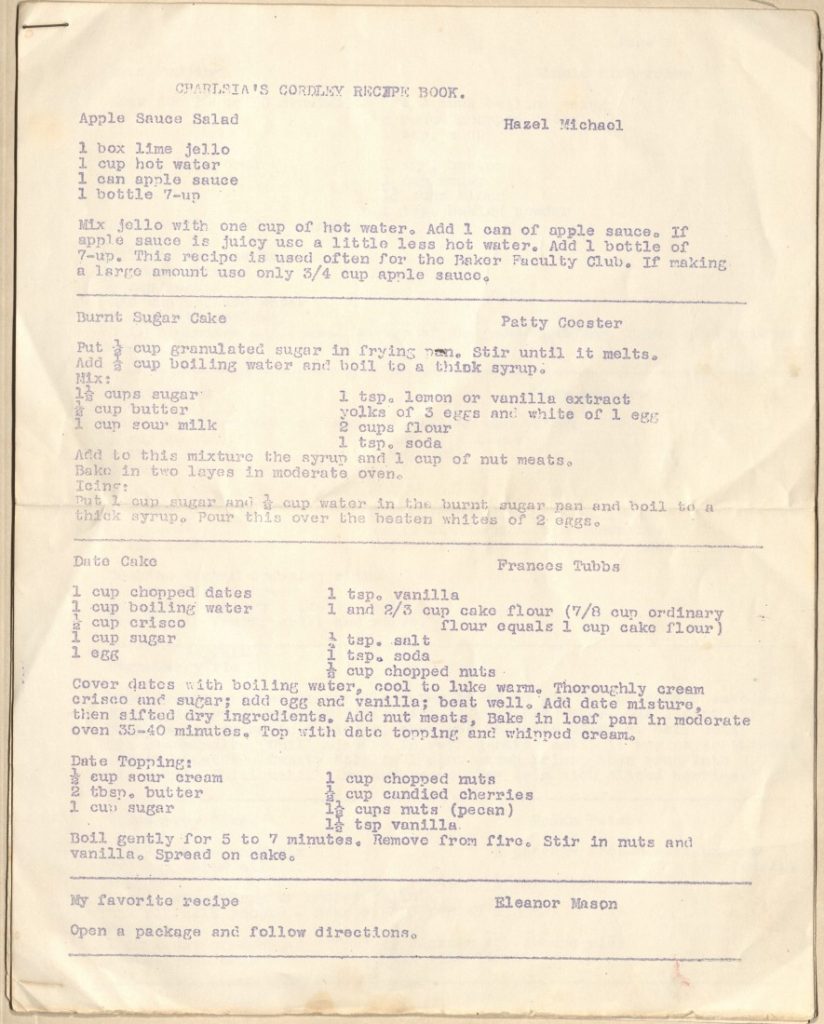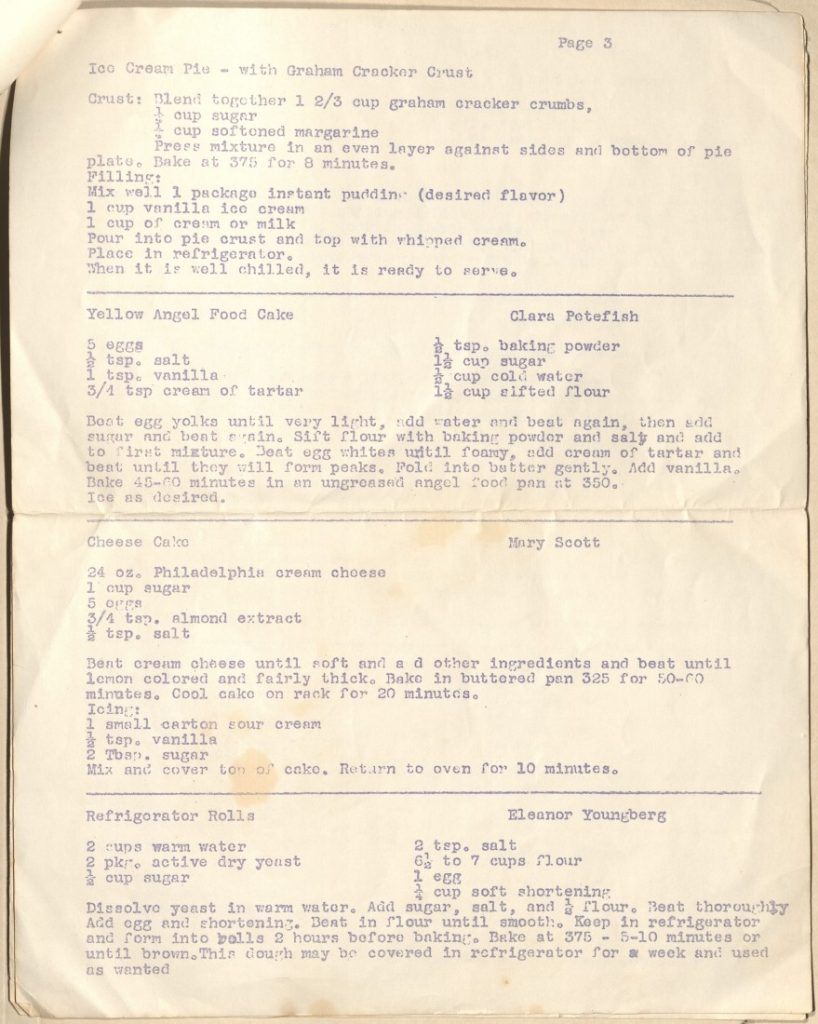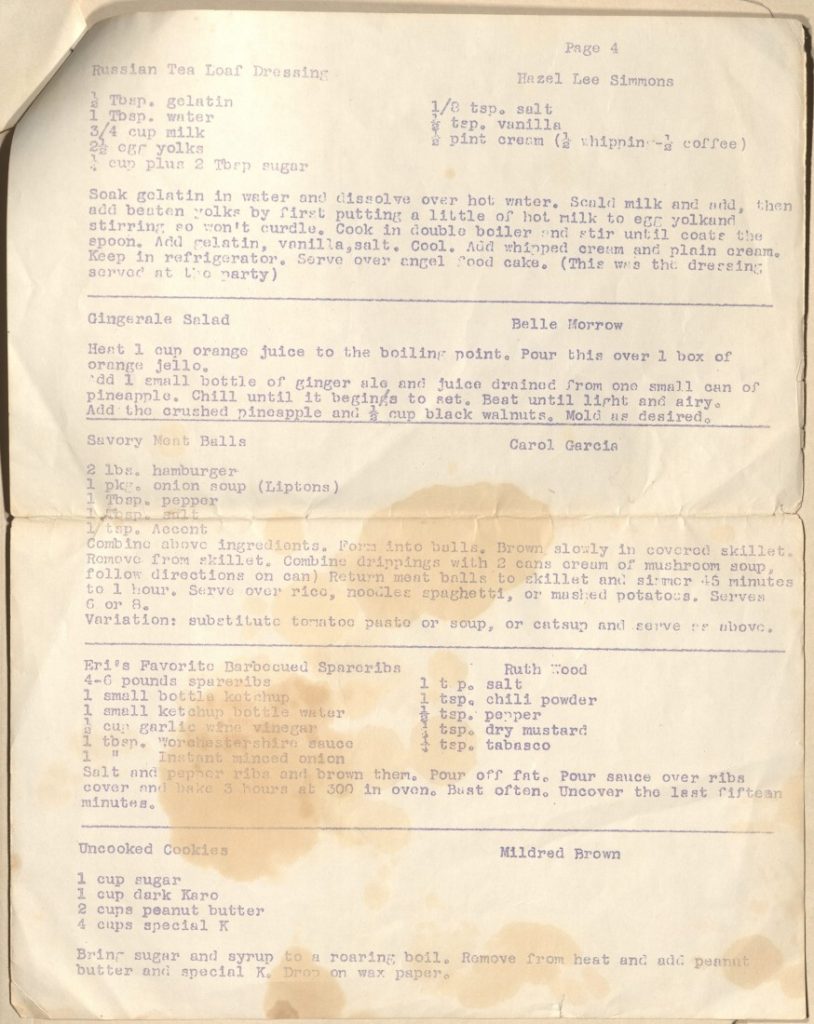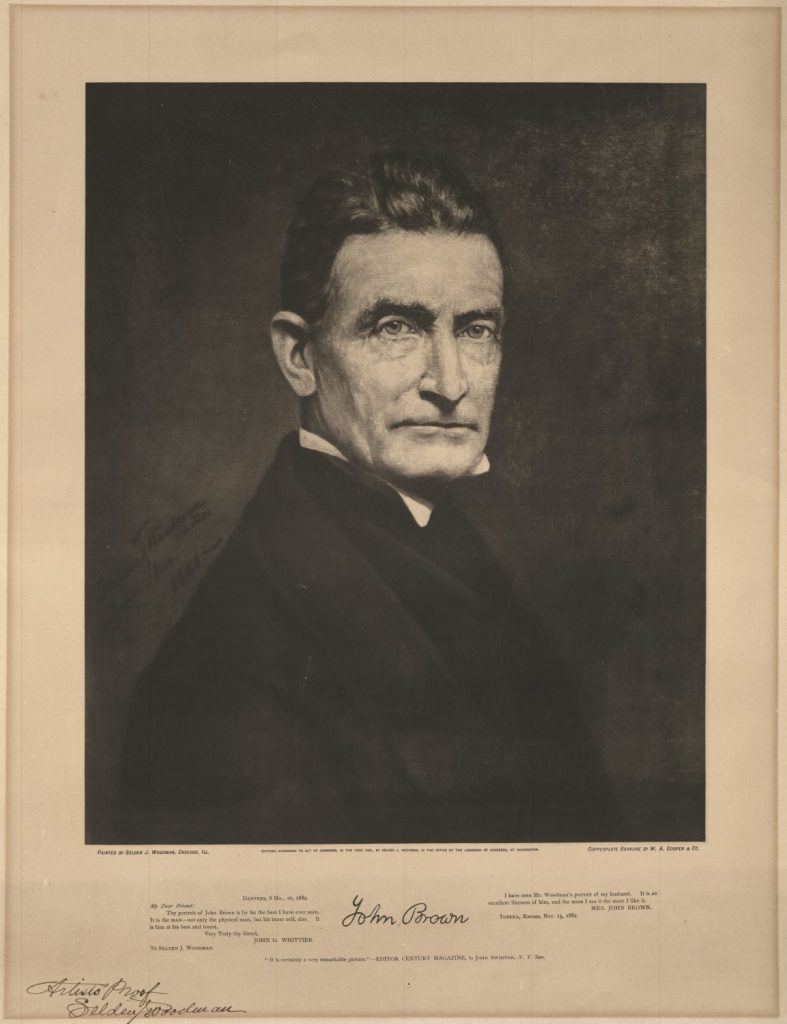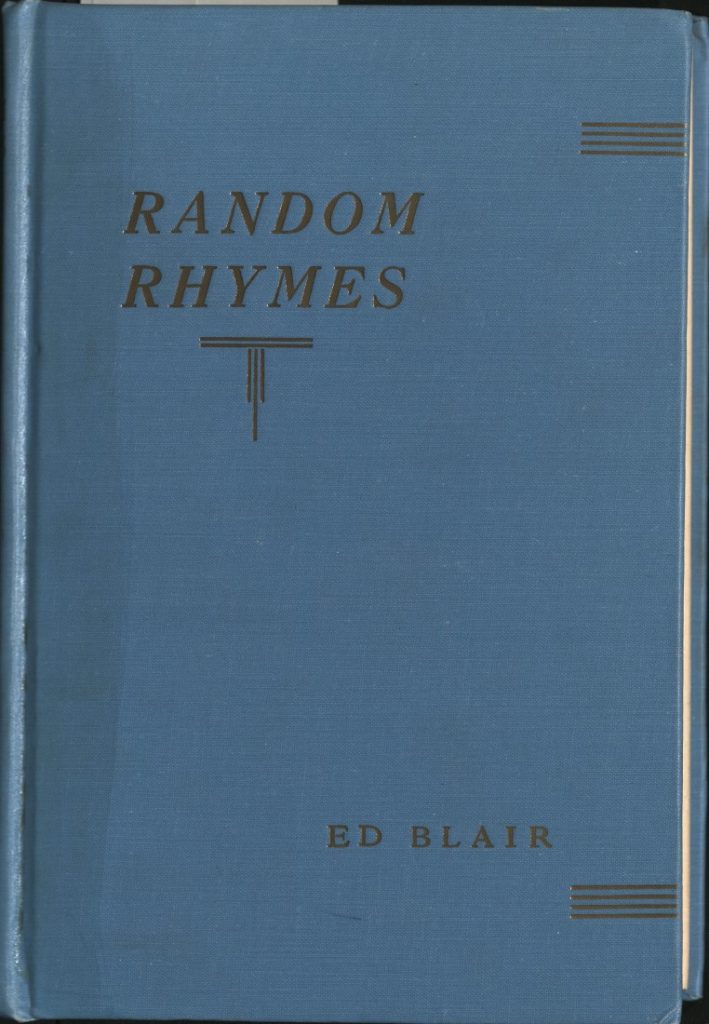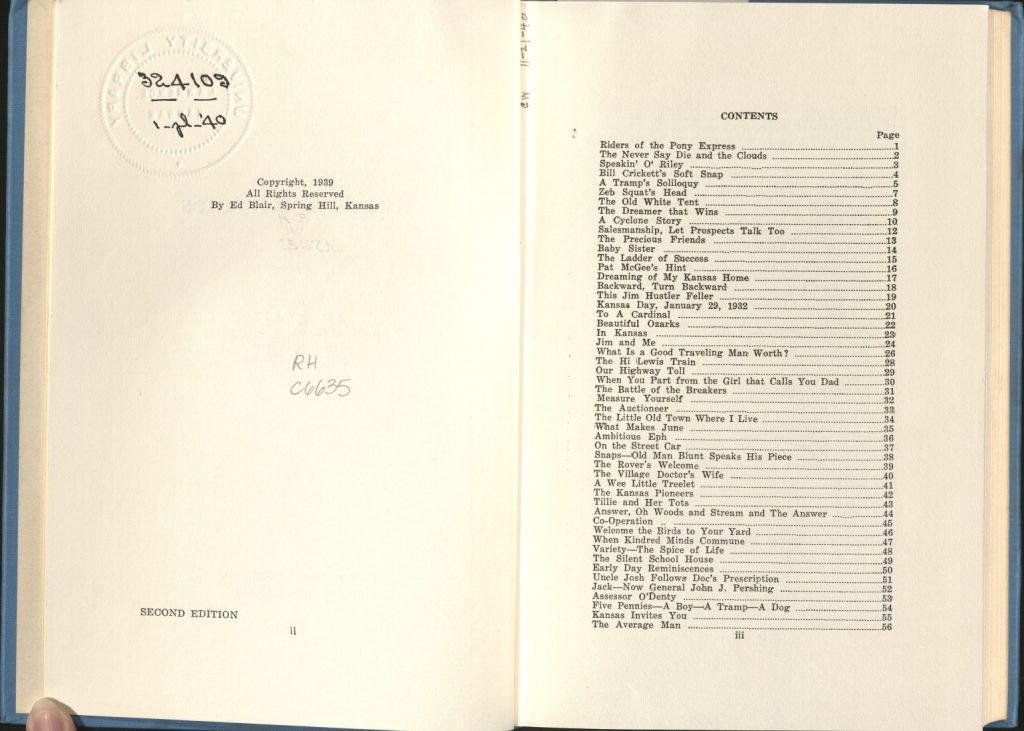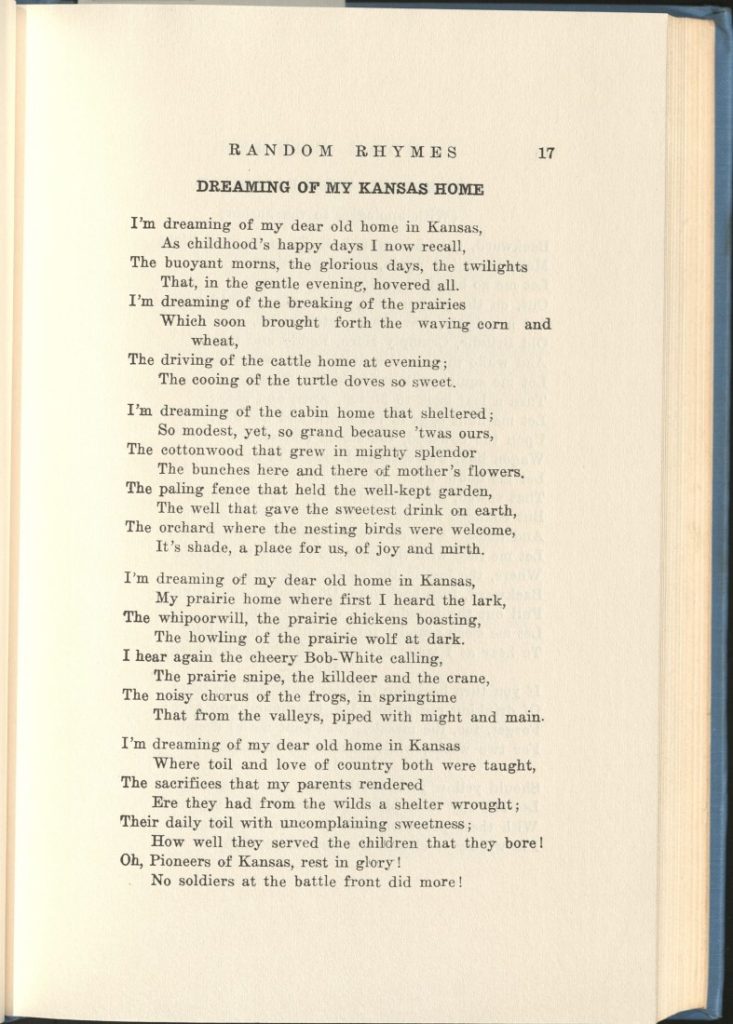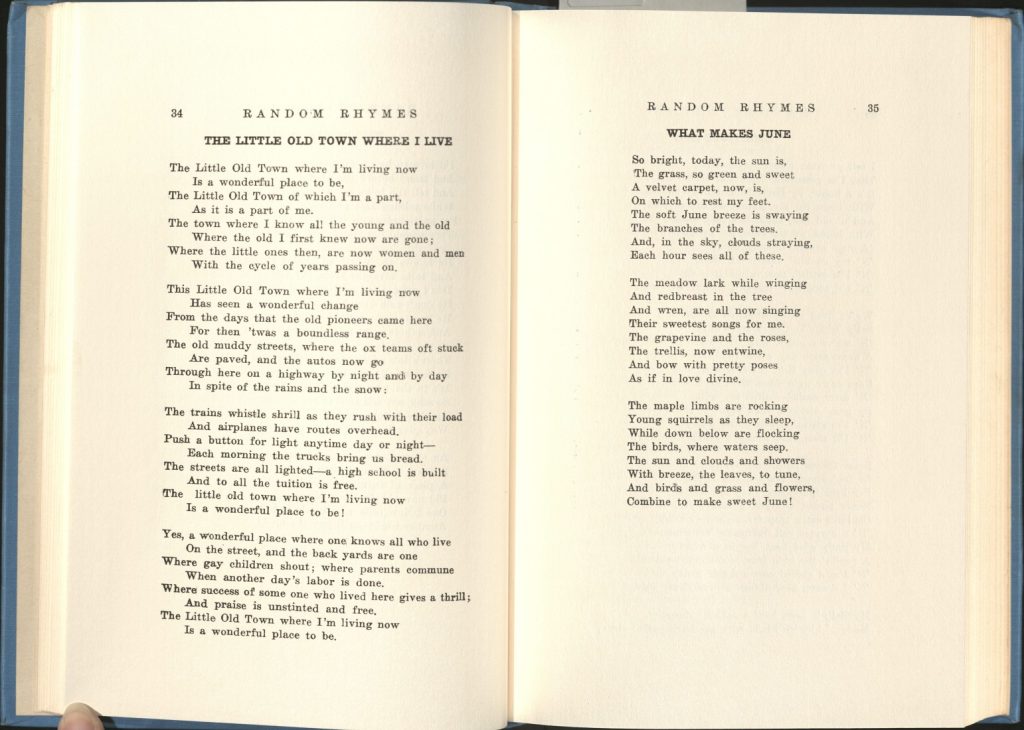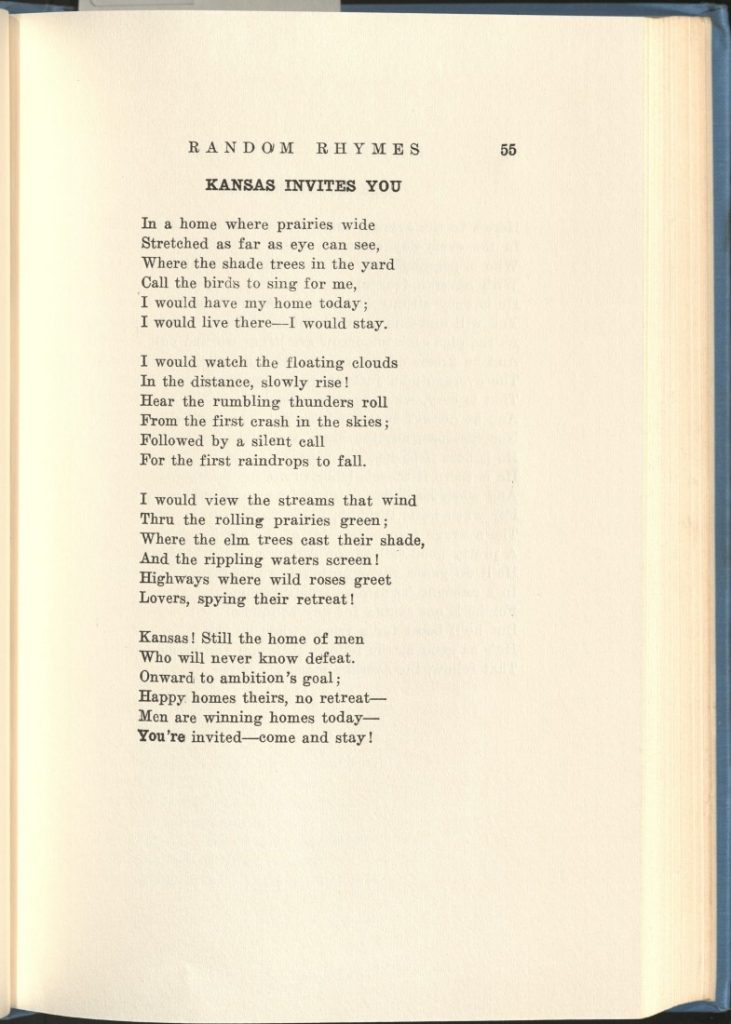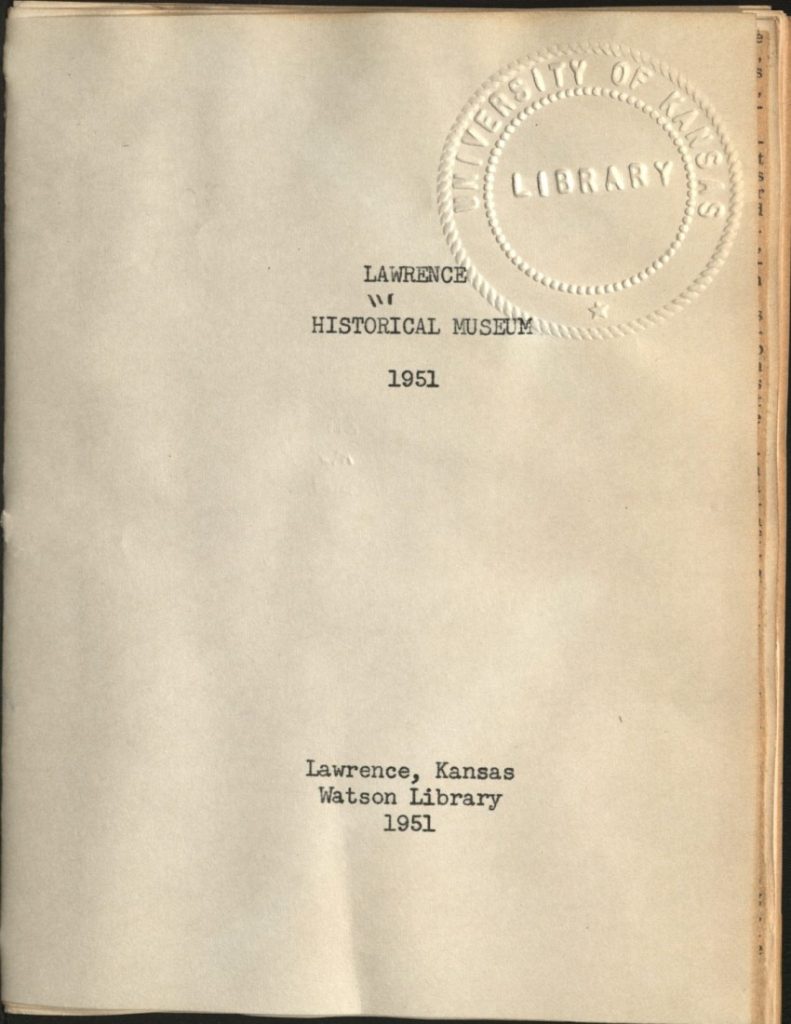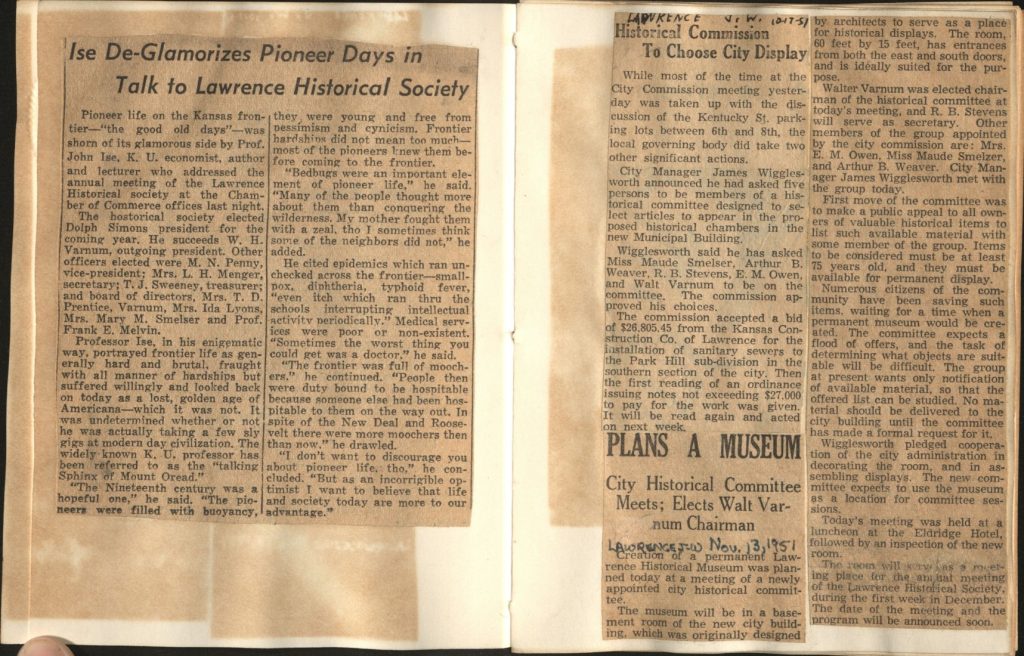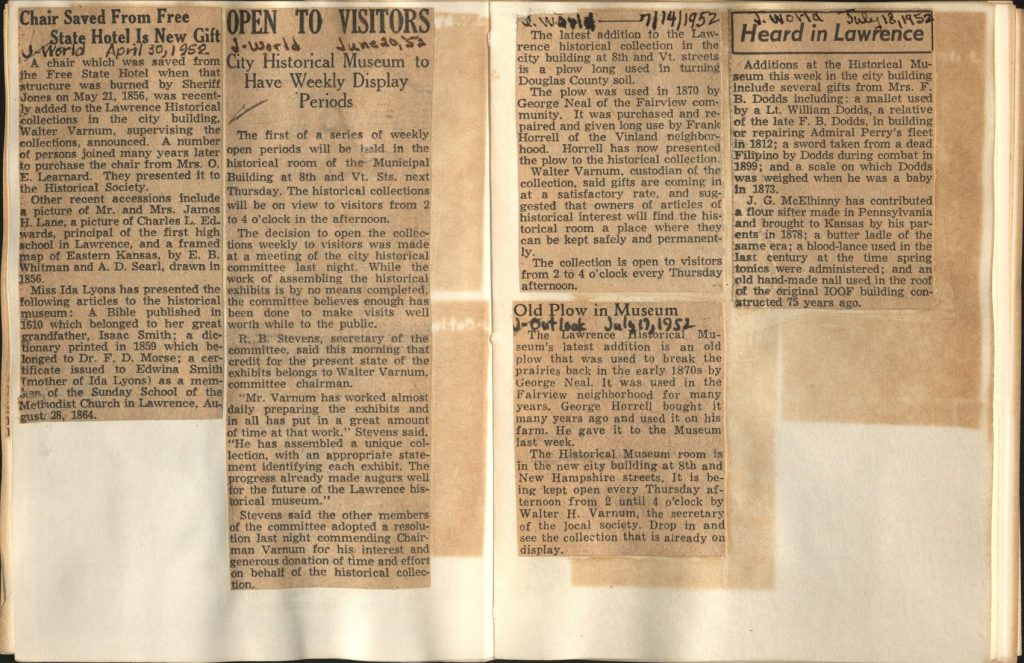Meet the KSRL Staff: Adrienne Sanders
May 21st, 2024This is the latest installment in a recurring series of posts introducing readers to the staff of Kenneth Spencer Research Library. Today’s profile features Adrienne Sanders, who joined Spencer Research Library in September 2023 as a Rare Materials Cataloging Librarian.
Where are you from?
I’ve lived in Lawrence for over 25 years, so I think I’m from here now. I grew up in various places around the greater Kansas City area and went to college in Southern California, then came to Lawrence after getting my undergraduate degree in linguistics. I like it here so I stayed.
How did you come to work at Spencer Research Library?
I didn’t set out to specifically work with rare materials. I worked in Watson Library at KU as a cataloging staff member for many years, and then at Topeka & Shawnee County Public Library for several years. Both positions had me working with rare materials some of the time. I worked with Latin American materials from Spencer’s Griffith collection at KU and with local history materials in Topeka. This position combines my cataloging and rare materials experience, although I’m still learning more all the time.
What does your job at Spencer entail?
Cataloging, in a nutshell, is creating the description of library materials that goes into an online catalog or database, so users can find out what we have. I describe the item physically, and I also assign subject headings that say what the work is about and call numbers that tell where the item is located in the stacks. There are multiple sets of rules that tell me how to compose and structure a bibliographic record, as well as conservation guidelines we follow to physically protect the materials. All of this is so when people search our catalog, they get results that (hopefully) show them what they want and how to access it through the library.
What part of your job do you like best?
I love learning a little bit about lots of things, and this job is perfect for that. Most materials come to me in batches of similar things that were donated or purchased together and are similar in topic or genre. I have to quickly learn what they’re about in order to describe them. It could be anything from 100 books about flying saucers to a dozen zines about political protests in Hong Kong. It keeps me from ever getting bored!
What is one of the most interesting items you’ve come across in Spencer’s collections?
One of the most interesting items I’ve worked with is also one of the oldest items. It’s a document created in Spain in 1570, called a carta executiva de hidalguía (or ejecutiva in modern spelling). These cartas were created to commemorate successfully petitioning the king to become nobility. (One of the benefits of being nobility was not having to pay taxes.) It’s written in gothic script and has a couple of pages of fantastic painted illustration. It turned out to be harder to read than I’d predicted, as I quickly learned that particular type of gothic script didn’t use punctuation marks or spaces between the words. The majority of materials I work with are from the 20th century, so this was both a challenge and a treat to catalog.
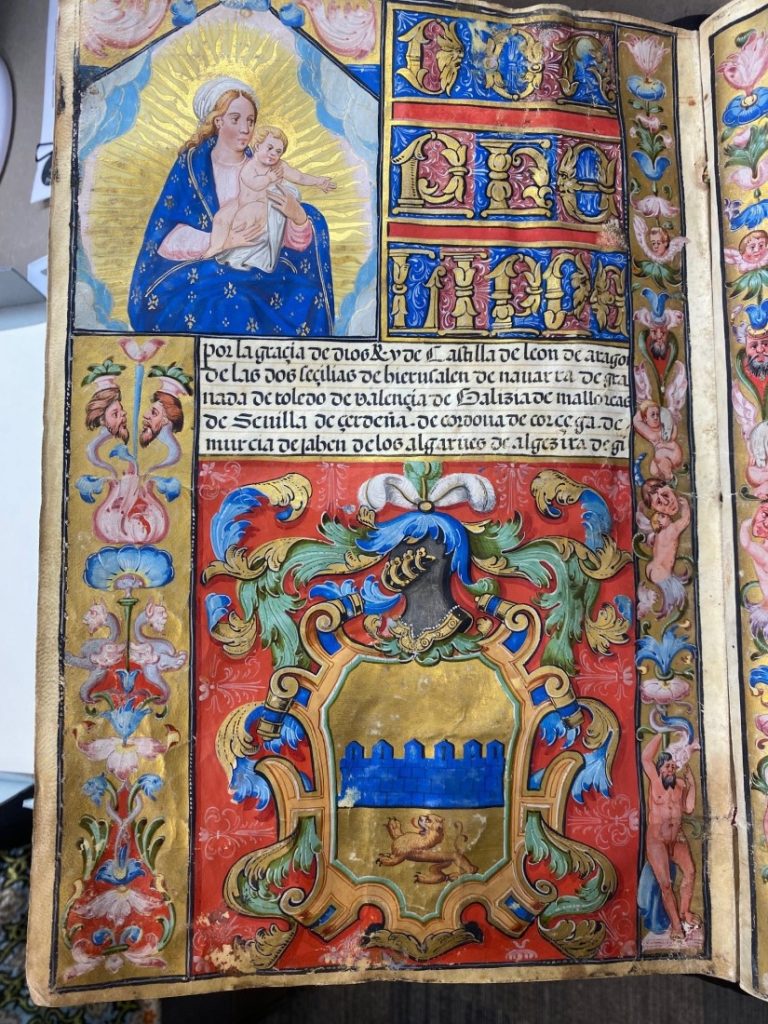
What are some of your favorite pastimes outside of work?
I’ve been knitting for many years, and it’s my favorite, but I will dabble in just about any craft involving yarn, fiber, or fabric. I’ve done a little crochet, embroidery, cross stitch, spinning (making yarn on a spindle), yarn dyeing, quilting, sewing, macrame, and probably more I’m forgetting. In stereotypical librarian fashion, I read a lot/listen to audiobooks, mostly literary fiction and science fiction. I also enjoy going to museums and historical sites, especially when traveling to places that are new to me.
Adrienne Sanders
Rare Materials Cataloging Librarian

